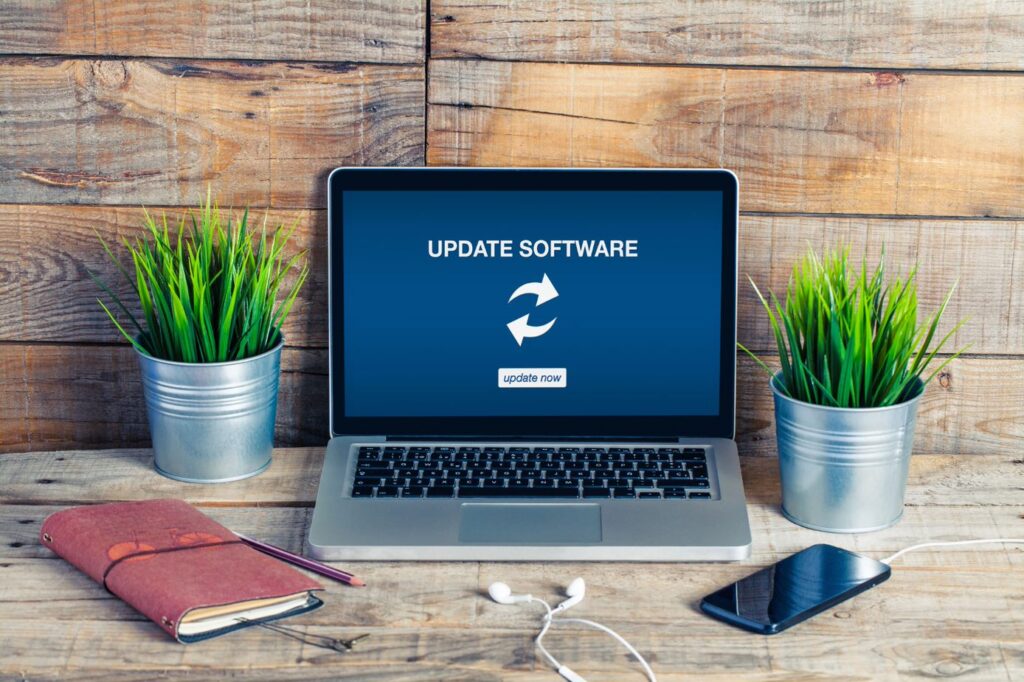As a pricing professional, you understand your products, your industry, your customers, and the market. You know how important a lever pricing is in your company’s success. So, you spend hours working out where you might be able to raise prices and by how much, and worrying about what else might break if you do. But there is only so much magic you can conjure inside an Excel spreadsheet.
Unsurprisingly, you’re curious about the hype around price optimization software. Would it really make any difference to your life? Would it really bring substantial benefits? And if so, how? After all, price optimization is price optimization, right? And you’re already doing that… right?
At Pricefx, we’ve spent the last decade in the pricing software space and want to answer some of your first questions when it comes to price optimization software, like what it is, how it works, and why we’re convinced that it leaves Excel in the dust when it comes to truly optimizing prices.
Let’s dive in.
What is Price Optimization?
Price optimization is about finding the price point that is most likely to help you execute your strategy, this is not just about finding the right price but finding the right price for the right value provided to the right customer in the right market segment.
The strategies that can be affected by this approach can include, but are not limited to: increased margins, volume, revenue, or market share, driving customer behavior, finding the right balance from a supply and demand perspective, etc
It’s about playing with price in order to optimize your chosen function/s, which could be anything from maximizing sales to minimizing cost to serve.
Price optimization is about finding the right price for your offering based on the value it delivers your customers. If you’re not aware where you customer finds value in your offering, then it’s going to be very difficult to optimize that price in a way that maximizes profitability.
What is Price Optimization Software?
Price optimization software analyzes a wide range of internal and external data to work out where the perceived value of your offering lies and then recommends price points (or ranges) based on your customers’ willingness to pay.
It also helps you determine the best pricing strategies to use with certain product or customer groups, to establish regional or seasonal strategies, to plan discount and promotion cadencies and strategies, as well as work out how best to combine products to maximum effect.
Let’s say you sell Lamborghinis (nice!). Are you able to optimize the price of your Lamborghinis in order to maximize sales? Sure! You can sell them for $50 each! You’ll have customers coming out your ears. Your cars will be gone in no time, followed quickly by your business……..
Your strategy didn’t take the value of your offering or your customer segment into account.
Better to maximize sales while maximizing profit by pricing your offering in a way that represents the value it delivers to the customer segment you’re targeting. Kanye West and Mariah Carey aren’t going to be seen dead in their Lamborghinis if every Jo Bling has one.
So how would we determine price based on willingness to pay using price optimization software?
Steps to Optimizing Price with Pricing Software
1. Define Your Scope
First you need to work out whether you are going to optimize prices for your entire portfolio or just a subset. For all customers or just some customer segments. For all markets or a selected few.
If your scope is a subset of the whole, you need to ensure that it is directionally correct to it; that it is representative of your business as a whole. You don’t want to choose a subset that is too specific, else the optimization model you develop for it won’t scale to the rest of your business and you’re back inside an Excel spreadsheet.
2. Define what you want to optimize
As we’ve seen, your goal for the optimization could be anything from maximizing margins, volume, or revenue, to minimizing cost to serve, so you need to know what it is you are trying to do.
It’s important to think about this step with care, again, the purpose is not just to find the price that will drive the most volume out the door, we need to have a strategy alongside a pricing optimization initiative.
Even though we talk about “price optimization” the reality is that price is a lever we will be using to achieve the goal of optimizing the real objective, and as mentioned previously, said objective can take many forms, and quite often it can take multiple forms at once.
3. Work Out Your Value
Willingness to pay is about finding the maximum price a customer is willing to pay for your offering. The more value they perceive in what you’re selling, the more they are willing to pay for it. You therefore need to know exactly how your offering brings value to your customer and which specific features might push that number higher for specific customer groups.
A person is more likely to pay more for a bottle of water after a race or an umbrella in a storm. Price optimization helps you leverage that increased willingness to pay without being unfair to customers.
So, let’s say you’ve learned from your Lamborghini disaster and now you’re selling diamonds (double nice!).
To work out perceived value, you first need to define the market segment that you intend to serve, each one will surely have needs and measures of value that are unique and worthy of differentiation, it is not the same to sell diamond to companies in the fashion industry or to those that need diamonds for industrial purposes.
Once the segment of the market is clearly identified we need to identify the attributes of your diamonds that could be used to validate a higher price to certain customer within that segment, so that you can appropriately price a diamond that satisfies needs better than one that does not or that offers more value than what the customer is willing to pay for.
Remember, you’re not getting the most out of your audience if you’re just selling diamonds to the rich and delicious. And even that customer group might find value in aspects of your diamonds that are not inherent to the piece of crystallized carbon you are trying to sell but to the way you sell it. That could look like the number of zeroes to the right of the price tag and of course bragging rights can absolutely be used as driver here.
So, how do your various customers value your diamonds? Some by weight, others by size, some by number of carats, and others by price. These are the attributes that you can use to determine the optimal price for each diamond. The more it weighs, the higher the price. The smaller, the lower, you get the idea.
And there you have the basis of your model. You’ve identified a scope that is representative of your business, defined your optimization goals, and worked out which attributes you can use as price drivers to validate your price. Now all that’s left is to:
4. Optimize Your Prices
The result of steps 1 – 3 will be a dependable model that you can now query. The model will match each of the attributes to offer a recommended price or range. Following the use case of diamonds we may have something that looks like this:
Color: Near colorless
Clarity: Flawless
Cut: Very Good
Carat Weight: 3.2 ct
What’s my price?
= (About the same as a Lamborghini.)
While this is a very simple example, it helps to illustrate how price optimization works and that it can take hours out of the pricing process while putting zeros onto the bottom line.
Is It Possible to Optimize Prices Without Software?
Yes… and no.
There are many companies doing their pricing in Excel where they’re able to build very simple optimization or linear programming models that allow them to find a solution to a particular problem. While Excel presents some constraints, it’s not rocket science. So yes, technically you can. But…
The process is not scalable, it is one thing to run through a myriad of excel formulas, collecting information from numerous sources of data, cleaning it to make it useful, iterate many times over until you find the right range of prices that seem to work, and then trying to do the same thing for the list of products that represent 80% of your business, let alone your entire portfolio.
And that’s not all, let’s say you work out a simple yet fantastic pricing optimization model to help you optimize prices on your gold watches… Does it apply to all gold watches or just certain brands? Does it apply to your designer bags? Or your Jimmy Choo’s? Do you want it applied across your entire customer base, so Mariah and Joe Bling pay the same price? Won’t you be leaving money (and/or customers) on the table?
Yes, you will.
Scalable pricing is a powerful tool that helps you capture more revenue from the customers who are willing to pay more, without losing customers whose threshold is lower. And this is why price optimization software takes you up level in pricing.
Luckily, our price optimization solution comes wrapped in an intuitive design with easy-to-customize dashboards. So, you can get up to that new level of pricing sophistication with ease.
Do You Need Data Scientists to Use Price Optimization Software?
No. Not at all. Not if you choose pricing software that’s going to guide you through the steps toward pricing excellence.
What will help you, however, are people comfortable working with data and statistics as they’ll be able to help you get the most out of it. But a good pricing solution’s job is to make its tools accessible for an entry level data enthusiast at least. No PHDs required.
Redefining Price Optimization
By optimizing prices in line with your defined function and scaling them according to the willingness to pay of your customers, you can dramatically boost profitability.
No more hours working in Excel to achieve a small margin uplift that is then applied across your customer base to leave money (and customers) on the table.
Price optimization software puts you on a journey towards pricing excellence, with all pricing data, history, and analytics stored in one place for continuous improvement over time. Not only does it allow you to get a better overview of all your pricing data, but actively guides you towards strong pricing strategies and successful outcomes.
Who Should NOT Be Considering Price Optimization Software (And Who Should Be)?
At Pricefx, we’ve noticed a rise in organizations wanting to implement price optimization software because it’s something that successful businesses do—they invest in machine learning AI, which somehow makes everything better.
However, there is a lot more to price optimization than simply following a trend and plugging in some software.
Having been in the price optimization software space for a decade now, we’re firm believers in the crawl, then walk, then run approach.
Pricing software is a tool that helps walkers to run. And while crawlers are more than welcome at Pricefx, we feel we’d be doing a disservice to our customers in selling them a solution they’re not ready to get the most out of. And because we believe this would be the same with most pricing software on the market, we thought we’d share our thoughts on who should and who should not be considering implementing price optimization software.
Who is Price Optimization Software Not Right For?
First, let’s explore some of the “types” of companies we’ve noticed wanting to start with a pricing solution that we don’t think will benefit from it.
1. The Cart Before the Horse
While some companies are in a great place to be bringing pricing software into the mix, others simply aren’t ready. We’re not talking about their pricing people necessarily; the company itself doesn’t have the digital maturity to get the desired benefits out of a price optimization solution.
And while we’re always spouting that pricing shouldn’t be afterthought, pricing software can’t come before the horse, so to speak. We’ve often found companies coming to us before they’ve got some of their other essential digitization tools set up. Like their ERP, for example. Or their CRM.
To get value out of your price optimization solution, you must already have a good understanding of your operational needs. If you’re a manufacturer or distributor and don’t yet have systems in place that simplify the process of operations, then you’re not going to be able to implement a price optimization solution because you’re not going to have enough time or resources to do it. If you’re still managing your shipments in an Excel file, then it’s too early to be thinking about pricing software. From an infrastructure perspective, you should be beyond the “crawl” phase, else it won’t be much good to you.
Don’t get us wrong; we’re excited to welcome you to the pricing software world, but at the end of the day, if you want the project to be successful, then having those things in place first is important.
2. Just Set It and Forget It
Another group we think price optimization software just isn’t built for are those who don’t consider price as a function to be an important lever. If cost-plus is where your ambitions end, and there is no push within the company to understand pricing at a strategic level, then price optimization software will just be a financial burden you don’t need.
So, if you’re part of the “just set it and forget it” crowd you might be better off in Excel for a while because you’ll simply not get the full value out of a solution designed to enable multiple price changes a day based on real-time market and customer insights. It would be like buying a rocket ship to pop to the shops.
Price optimization software is about achieving so much more than simply setting prices.
3. Show Me the Model!
While we love showing off the miracles our solution can perform in demos, we always get a bit worried when a prospective customer wants to see an exact model for their business in action. It’s a red flag that perhaps they don’t fully recognize how price optimization (let alone price optimization software) works and therefore why they would be investing in it.
Smart pricing solutions do not come in a glossy catalog. You can’t simply choose the “5-steps to protein manufacturing profitability” template and hit “go”.
In order to build a solution that really delivers, we first need to understand your specific pricing processes and data blocks and to work closely with you to ensure your pricing tools match your pricing goals.
To be clear, missing the point of pricing software doesn’t mean that you’re not a wizard at pricing your products, but it does suggest that you don’t know how you know what you know and that you’ve never had that knowledge put to the test.
We believe it’s important that your reasons for investing in pricing software are the right ones, else you might find your experience a painful one.
If your digital maturity is not ready for the upgrade, then you’re pumping bad data in and hoping to get good prices out. You could not only lose money (with the wrong prices presented to the wrong customer groups) but you could also lose your way on your journey toward pricing excellence.
Who Should Be Implementing Price Optimization Software?
Organizations mostly likely to succeed with pricing software will have a genuine interest within leadership on understanding where the potential of price optimization is who then champions the transformation from the top.
Price optimization software is going to be best for teams that have already done some of the work. If you’ve created a model in Excel or Access and have already been doing some level of optimization yourselves, then you know what the work entails and how hard it is. You have no illusions that implementing pricing software is going to be easy.
But you’re also aware that it’s more than worth it… and you know why. You know that a price optimization solution will dramatically increase profitability by delivering the tools or frameworks to go after key top-line metrics, allowing you to scale up your optimization processes and test different models to find what works for your business.
You’re also well aware that it brings increased agility so you’re better able to quickly adapt to changing conditions in the market. You remember when you thought you might set prices for 2020 based on sales data from 2019 and suddenly realized it was useless. You’re more than mindful that models you develop in enterprise optimization software can become obsolete very, very quickly and that you can’t afford to be caught out again.
Don’t let less-than-perfect data deter you. If you understand the limitations of your data—that’s a marker of maturity.
So, if you’re asking “Do I really understand my data? And the value of my products in the market? Is there a better way to segment my customers? And create differentiation of price across different customer segments? Do I have a clear vision of what I’m trying to achieve?”
… then you’re ready.
Price Optimization Software – Ready or Not?
As painful as it is for pricing solution vendors to admit, pricing software is not for everyone.
If you don’t yet have the digital maturity to add price optimization to the mix, if your needs are likely to stay at the “cost-plus” level, or if you don’t fully understand the benefits and ramifications of implementing price optimization software, then it might not be for you, yet.
Of course, Pricefx would love to welcome you to the pricing software world and show you all the fun pricing toys we have built that help you take your pricing to the next level. But it just wouldn’t be fair to take your money for our price optimization solution when we know you’ll not get the full value out of it.
But perhaps you need a different form of pricing software that better suits your organization’s needs? Be sure to check out more in our handy upcoming series of articles as they appear in our Learning Center, ‘Is CPQ Software Right for Me’, ‘Is Pricing Analytics Right For Me’, and ‘Is Pricing Management Software’.



